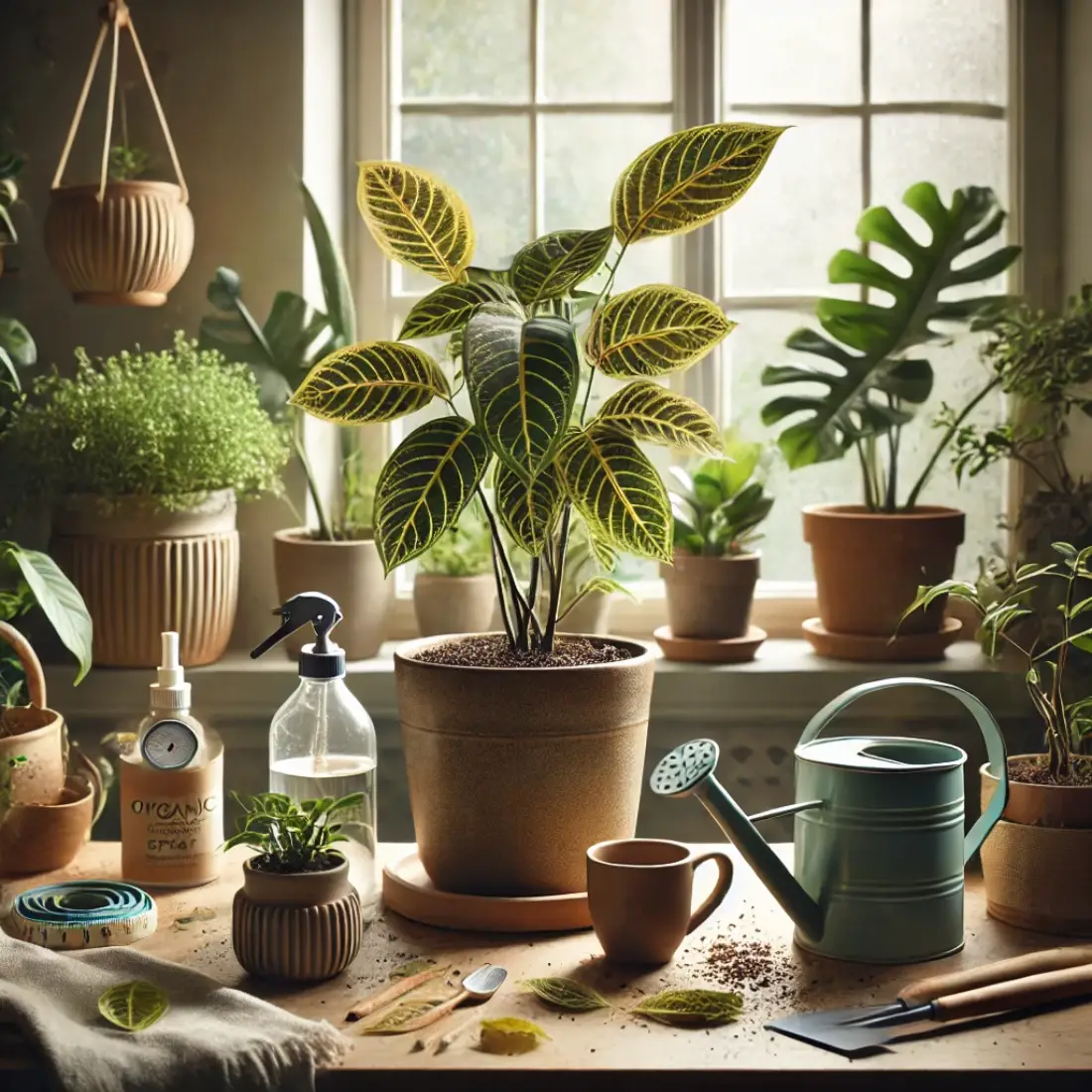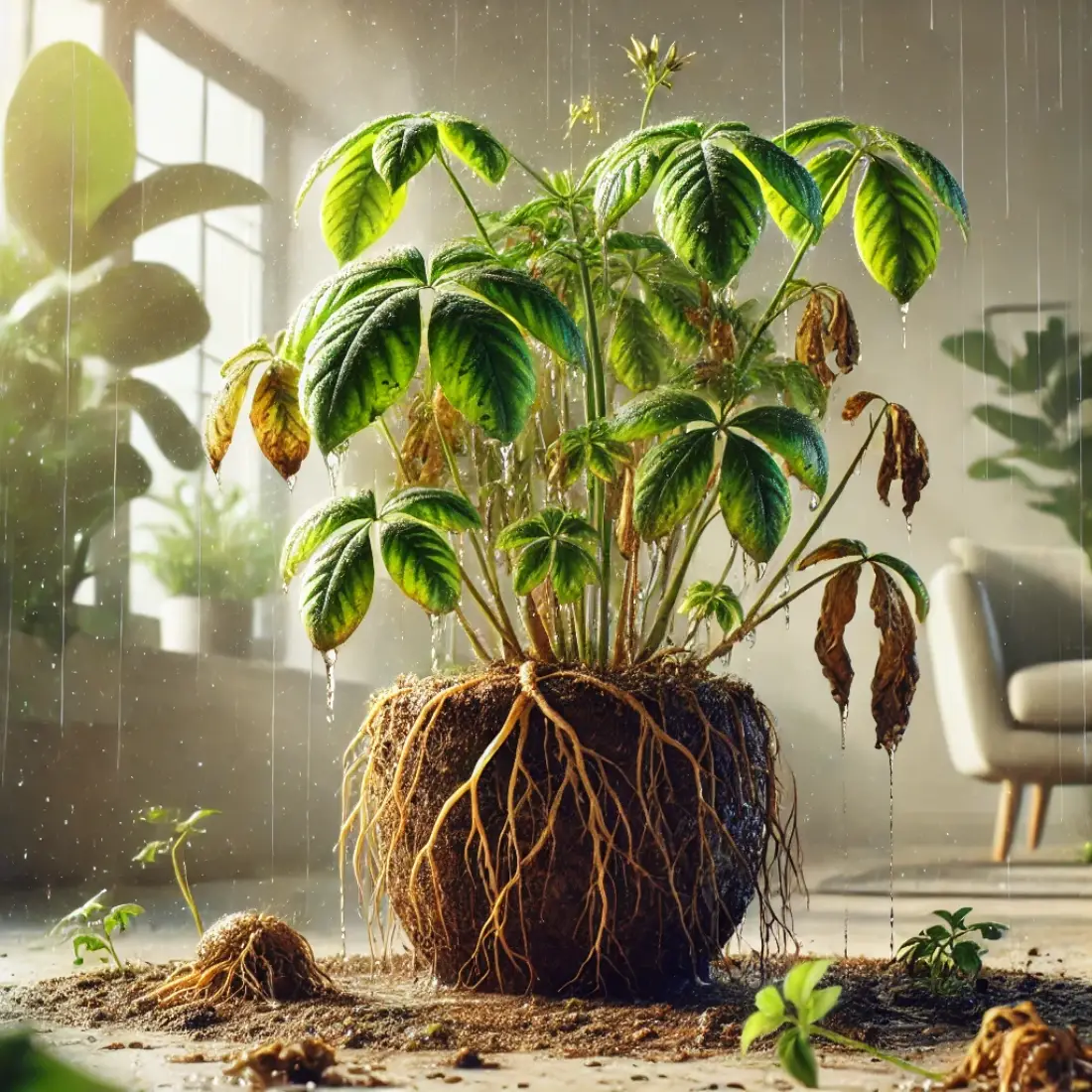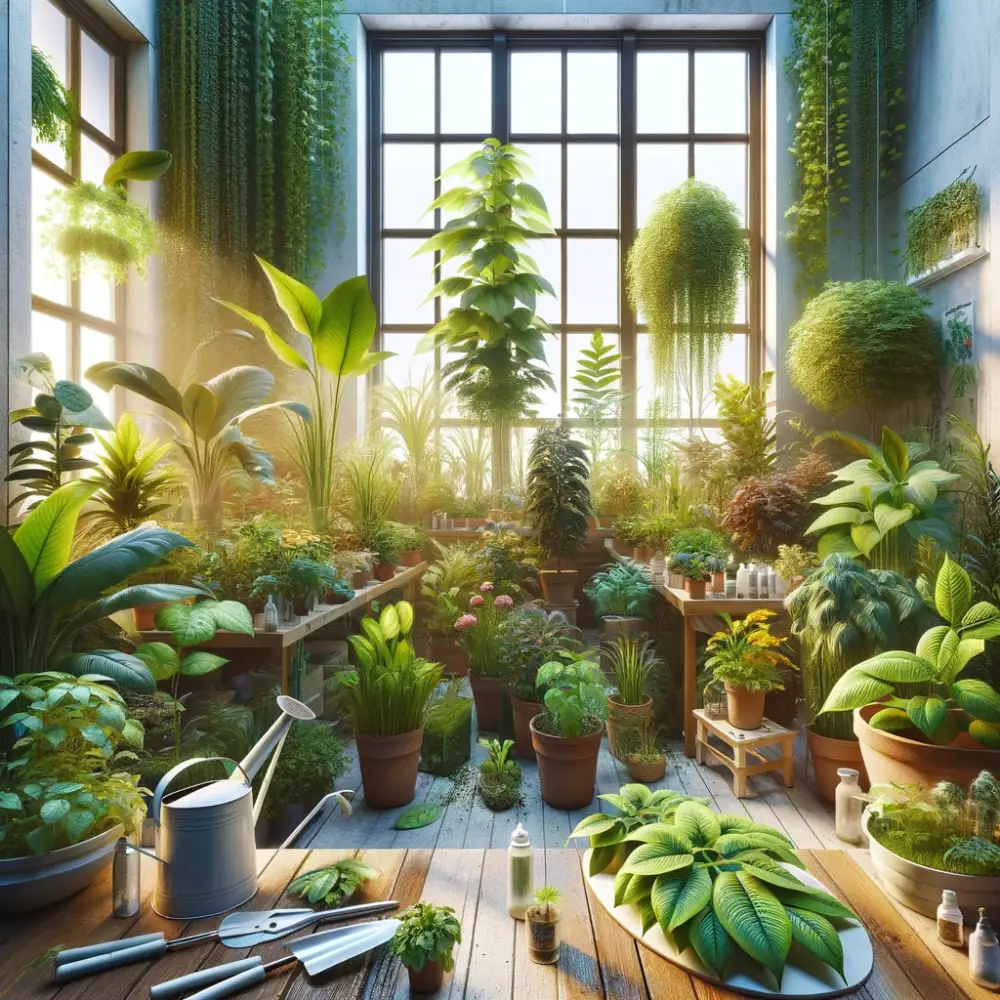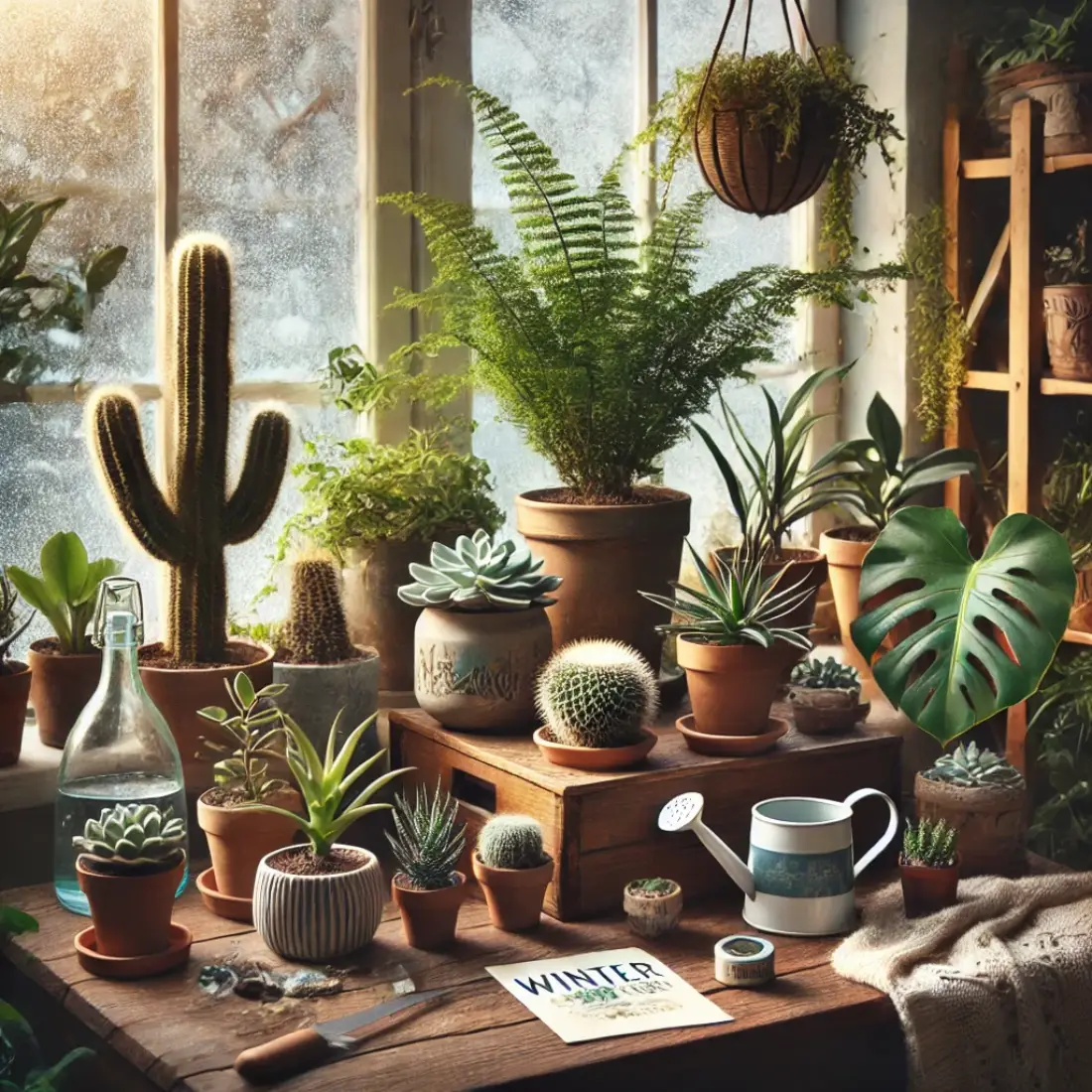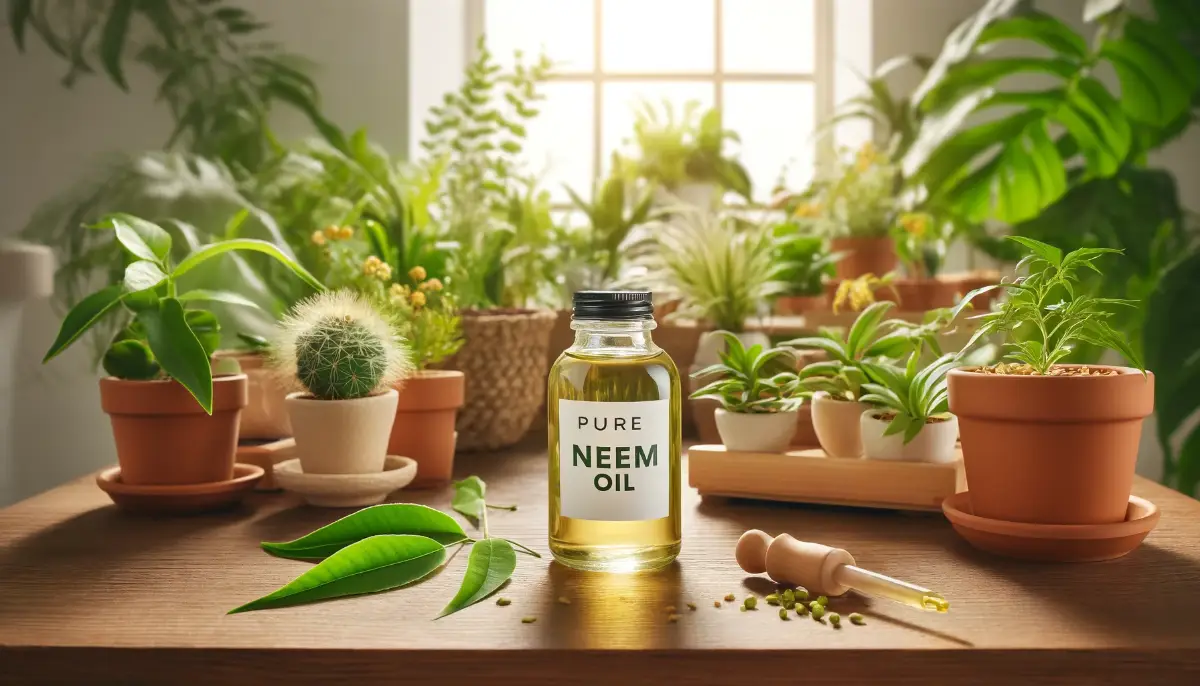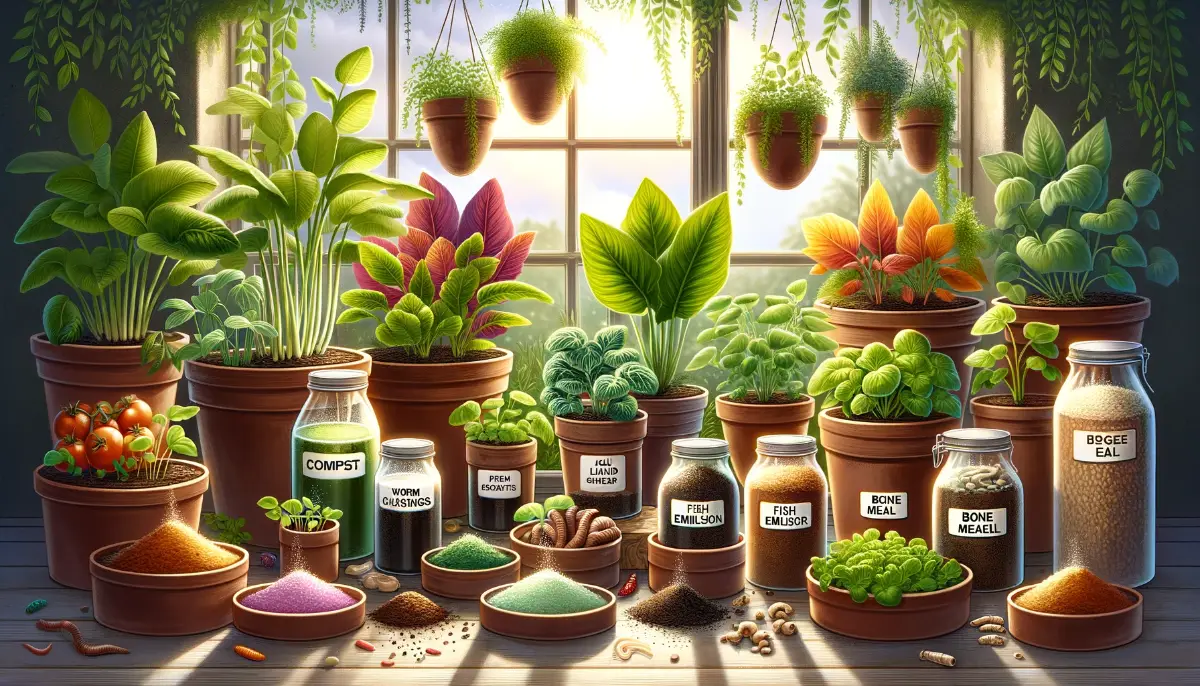When leaves on your houseplants start to drop, it can be frustrating and concerning. Leaf drop in houseplants is a common issue that can occur for several reasons, including environmental stress, watering problems, and pests. By understanding these causes and applying effective organic remedies, you can help restore your plants’ health and prevent leaf drop in the future.
- Leaf drop in houseplants often results from environmental stress, watering habits, and pest issues.
- Organic remedies like adjusting temperature, controlling humidity, and using natural pest deterrents can help treat leaf drop.
- Preventive care strategies such as consistent watering and regular plant monitoring are key to long-term plant health.
Causes of Leaf Drop in Houseplants
Environmental Stress
Temperature changes are one of the most common causes of leaf drop. Rapid changes, such as moving a plant from outdoors to indoors or placing it near a drafty window, can shock the plant, causing leaves to fall.
Humidity is another factor, especially for tropical houseplants that require higher humidity levels to thrive. A drop in humidity can lead to leaf drop, wilting, or browning edges.
Finally, insufficient lighting can trigger leaf drop. Most houseplants prefer indirect but consistent light. When plants experience sudden changes in light, like moving them away from a sunny window or into a dimly lit area, they often respond by dropping leaves.
Watering Issues
Overwatering is one of the leading causes of leaf drop in houseplants. When soil is waterlogged, the roots cannot access oxygen, leading to root rot and stress. Underwatering, on the other hand, can cause leaves to drop as the plant tries to conserve moisture.
Inconsistent watering—alternating between dry and over-watered conditions—also contributes to leaf drop. Developing a regular watering routine can help prevent these issues.
Nutrient Deficiency
Houseplants need nutrients like nitrogen, magnesium, and potassium to maintain healthy leaves. A deficiency in these nutrients can weaken leaves, leading to yellowing and eventual drop. Yellowing or pale leaves are often a sign that your plant needs additional nutrients to maintain strong foliage.
Pest Infestations
Pests such as aphids and spider mites can damage leaves, causing premature leaf drop. These pests drain the sap from leaves, leading to stress, yellowing, and eventually leaf drop. While pests can be a serious problem, organic pest control methods can help you manage infestations effectively.
Organic Remedies for Leaf Drop in Houseplants
Correcting Environmental Stress
To reduce temperature stress, move plants gradually between environments. Avoid placing them near heat vents or drafty windows where they’re exposed to rapid temperature fluctuations. Keep your home temperature stable, ideally between 65–75°F for most houseplants.
To boost humidity, try grouping plants together, which creates a natural, humid microclimate. You can also set up a pebble tray by placing a tray filled with pebbles and water underneath the plant pot. The water will evaporate slowly, providing a gentle humidity boost. Alternatively, misting leaves with filtered water is a simple, natural way to increase humidity.
For low-light areas, consider using supplemental lighting, such as LED grow lights, to give plants the right amount of light without risking leaf drop due to insufficient lighting.
Adjusting Watering Practices
Establishing a consistent watering routine is one of the most effective ways to prevent leaf drop. A good method is the “finger test”: simply insert your finger into the soil about an inch deep. If it feels dry, it’s time to water. To avoid overwatering, consider bottom-watering by placing the pot in a shallow tray of water and letting it absorb moisture from below.
If you live in an area with hard water, it’s best to use rainwater or distilled water instead of tap water, which can contain minerals that build up in the soil, causing stress.
Addressing Nutrient Deficiencies Organically
To address nutrient deficiencies naturally, apply a diluted compost tea to give your plants a nutrient boost. Compost tea provides a gentle yet effective way to add nitrogen and other minerals to the soil.
An Epsom salt solution is a great option for magnesium-deficient plants. Dissolve a teaspoon of Epsom salt in a gallon of water and spray it lightly on the leaves. Banana peels are also rich in potassium and can be chopped up and added to the soil, providing a slow-release, natural fertilizer.
Organic Pest Control
For pest infestations, neem oil is an excellent organic remedy. Dilute neem oil with water and add a few drops of castile soap; then spray it on the affected leaves once every 7–14 days.
Alternatively, try a homemade garlic spray by steeping crushed garlic in water overnight. Strain the liquid and spray it on plants to deter pests. Another effective remedy is an insecticidal soap, which can be made using natural castile soap diluted with water. This mixture gently cleans leaves, removing pests without harming the plant.
Preventive Strategies to Avoid Leaf Drop
Regular Monitoring and Maintenance
Conduct weekly plant checks to catch early signs of yellowing, drooping, or pests. Dust leaves with a soft, damp cloth to clear away any dust that can block light and attract pests.
Maintaining Ideal Conditions
As the seasons change, adjust light, water, and humidity levels to support your plants’ needs. Rotate plants periodically to ensure even light exposure, preventing the plant from leaning or becoming stressed from unequal light distribution.
For natural humidity enhancement, consider placing a small fountain or a humidifier nearby, especially in drier months when indoor humidity levels drop.
Soil Health
Use a well-draining, organic potting mix that includes compost and perlite to support healthy root growth and avoid waterlogging. You can also add a thin layer of organic mulch on the soil surface. Mulching helps to regulate soil temperature and retain moisture, creating a stable environment for roots.
Organic Fertilizing Practices
Top-dress with a light layer of compost every few months to replenish soil nutrients naturally. Worm castings are another excellent natural fertilizer that improves soil fertility and enhances microbial activity. Spread a small amount around the base of the plant for a slow-release nutrient boost.
FAQs: Common Questions on Preventing and Treating Leaf Drop Organically
How often should I water my houseplants to avoid leaf drop?
It depends on the plant and environment, but generally, checking the soil moisture weekly can help. Use a moisture meter or feel the soil before watering.
Can low humidity alone cause leaf drop?
Yes, especially for tropical plants that require higher humidity. Maintain levels around 50–60% for plants sensitive to dry air.
How do I use neem oil for pest control?
Dilute a few drops of neem oil with water and a small amount of castile soap. Spray the mixture on affected leaves every 7–14 days.
What are common signs of nutrient deficiency in houseplants?
Look for yellowing leaves, weak growth, or pale foliage. Compost tea and worm castings are effective for boosting nutrients naturally.
Is leaf drop normal during seasonal changes?
Yes, mild leaf drop can occur as plants adjust to changing light and humidity. Consistent care and monitoring can minimize this seasonal adjustment.

